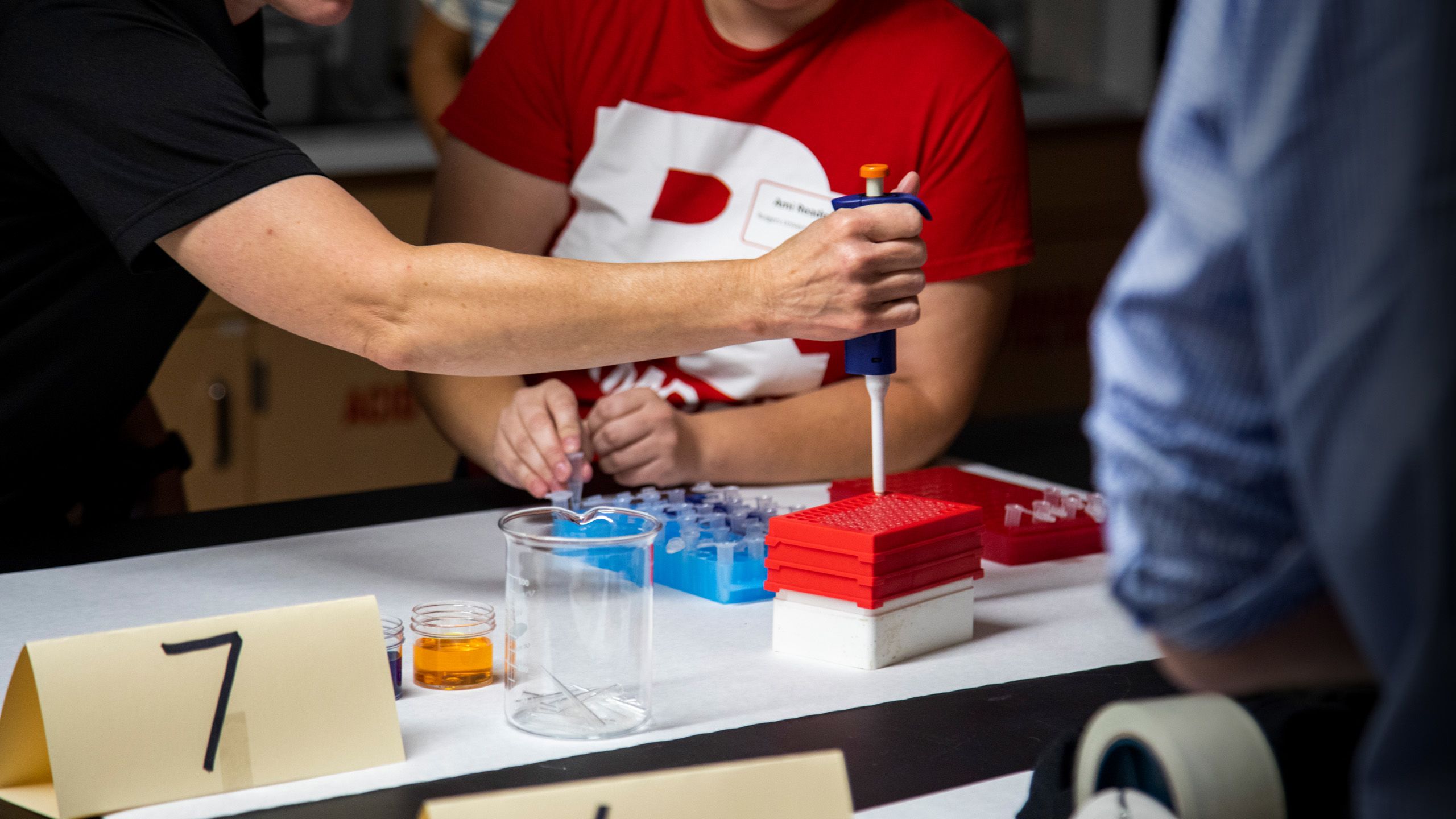Rutgers University–Camden Unites Law Enforcement and Lab Personnel for Innovative Forensics Training
The program explored the collection, analysis, and limitations of DNA evidence, emphasizing collaboration between frequently siloed groups

This summer, the Rutgers University–Camden Forensic Science Program brought DNA lab staff and law enforcement officials together for a series of courses aimed at fostering closer, more efficient working relationships between officers and scientists. The program was led by Associate Teaching Professor and Director of Forensics Kimberlee Moran, M.S., who teaches in the College of Arts and Sciences’ Department of Chemistry. Moran hatched the training initiative in direct collaboration with local law enforcement, gauging their needs and developing a curriculum on DNA’s role in identifying and eliminating potential victims and suspects. The demand for the program spoke for itself, as more than 60 prosecutors, detectives, and crime-scene personnel came to the Rutgers–Camden campus to study innovations and best practices surrounding DNA evidence.
“The Forensic Science Program is dedicated to providing resources to the South Jersey region,” Moran said. “Last summer, we hosted a two-week program that was well received, and more training was requested for this summer on the topic of DNA. I met with members of the Gloucester County Prosecutor’s Office and asked them to throw at me everything they wanted to know. As they spoke, I typed. I organized that material into three days of training, leveraging our program’s network of forensic science practitioners to find the best instructors.”
Moran said that even professionals sometimes fall victim to simplified or sensationalized television and movie portrayals of what can and cannot be done with DNA evidence.”
“There is no magic machine that takes a swab and ‘solves’ the case,” Moran said. “DNA analysis requires a series of judgment calls, from how and where to swab, to which extraction protocol should be used in interpreting DNA profiles. There are multiple people involved, and the whole process takes weeks or more. Professionals have just as many unrealistic assumptions. DNA is presented as the perfect forensic tool, but not every piece of evidence is suitable for DNA, and results require a certain amount of interpretation.”
Moran’s forensic science students assisted with the training and had the opportunity to network with their future colleagues in law enforcement and laboratory roles.
“Law enforcement is eager to learn,” Moran said. “They want to be as effective as possible in the field and the lab. Otherwise, the lab becomes a black box where evidence goes in, and results may or may not come out. Scientists can and should partner their law-enforcement counterparts. By talking directly with DNA lab personnel, they can better understand what evidence is likely to yield results and where DNA has limitations. This training helped facilitate those conversations and brought all the stakeholders in the crime-scene-to-court pipeline together under one roof.”
“By talking directly with DNA lab personnel, they can better understand what evidence is likely to yield results and where DNA has limitations. This training helped facilitate those conversations and brought all the stakeholders in the crime-scene-to-court pipeline together under one roof.”
This summer’s training was far from Moran’s first success in bringing community members together to great effect. In 2017, she led a team of forensic scientists, historians, Rutgers–Camden students, and volunteers in excavating and cataloguing human remains from a Philadelphia construction site that was the former location of the First Baptist Church Burial Ground. She hopes that the success of all her past efforts has opened the door for additional collaborative training sessions in the years to come.
“It’s likely next year’s training will also come directly from the needs of our local criminal justice community,” Moran said. “It’s clear that DNA was popular, and it is likely to be offered again. We had far more interest than available seats! I was proud to showcase the facilities and the quality of science that takes place on the Rutgers–Camden campus.”

Creative Design: Karaamat Abdullah